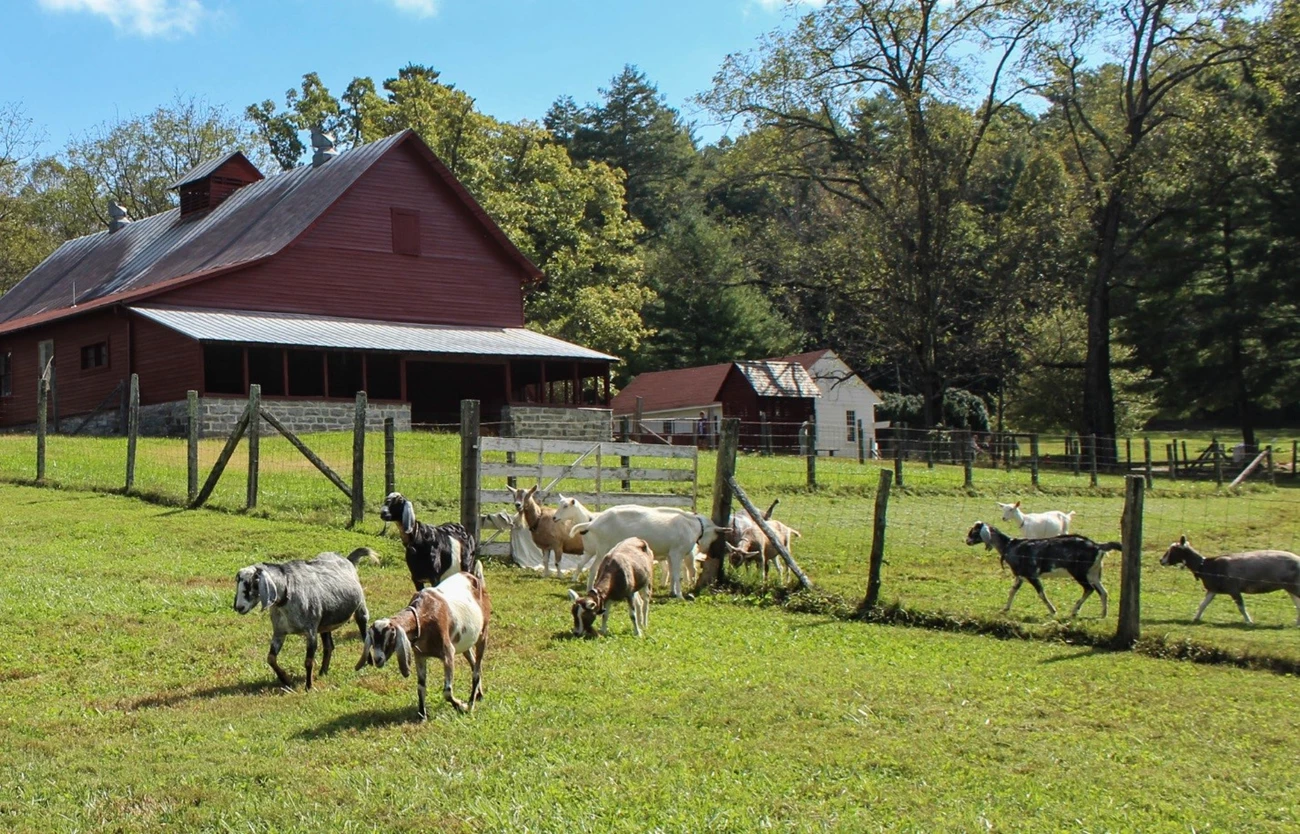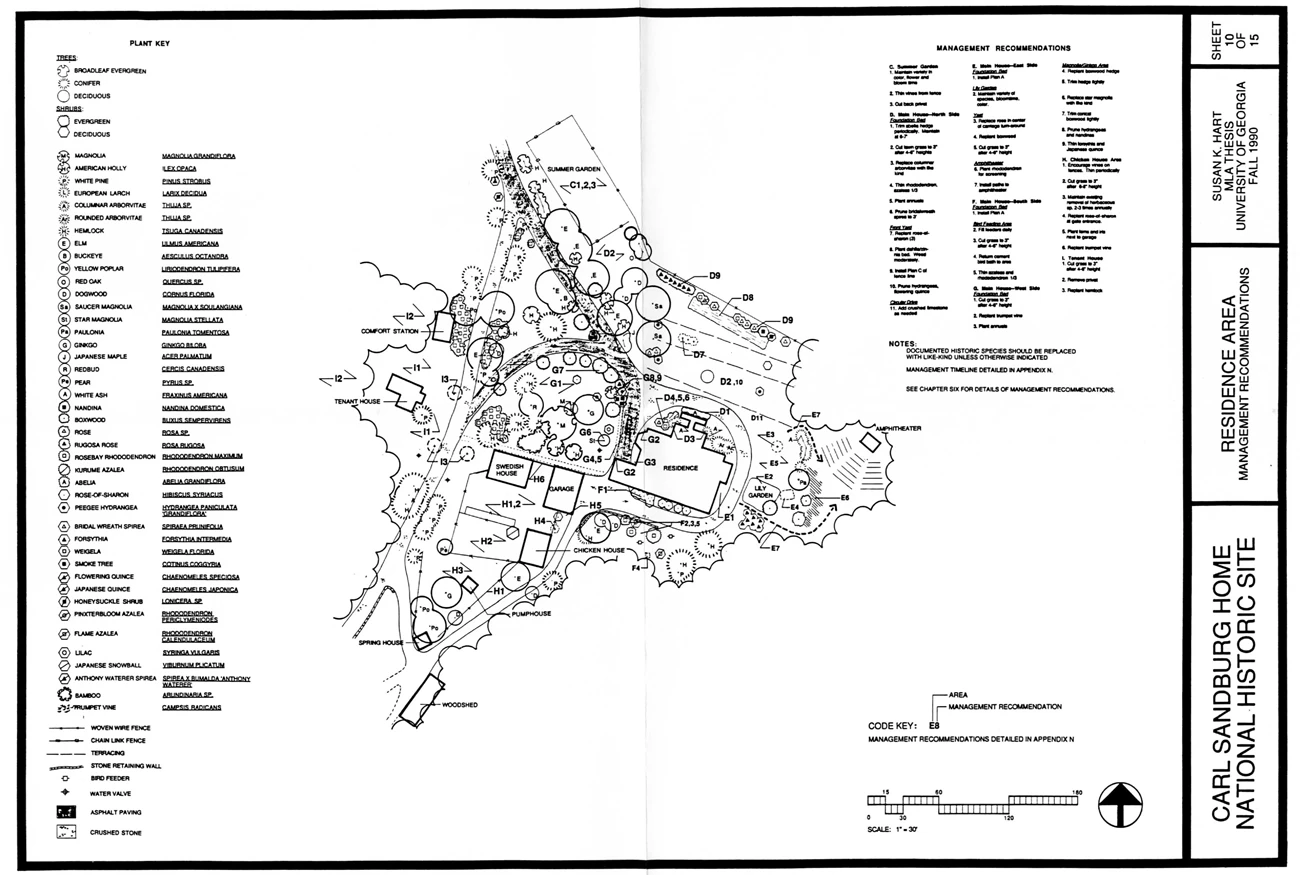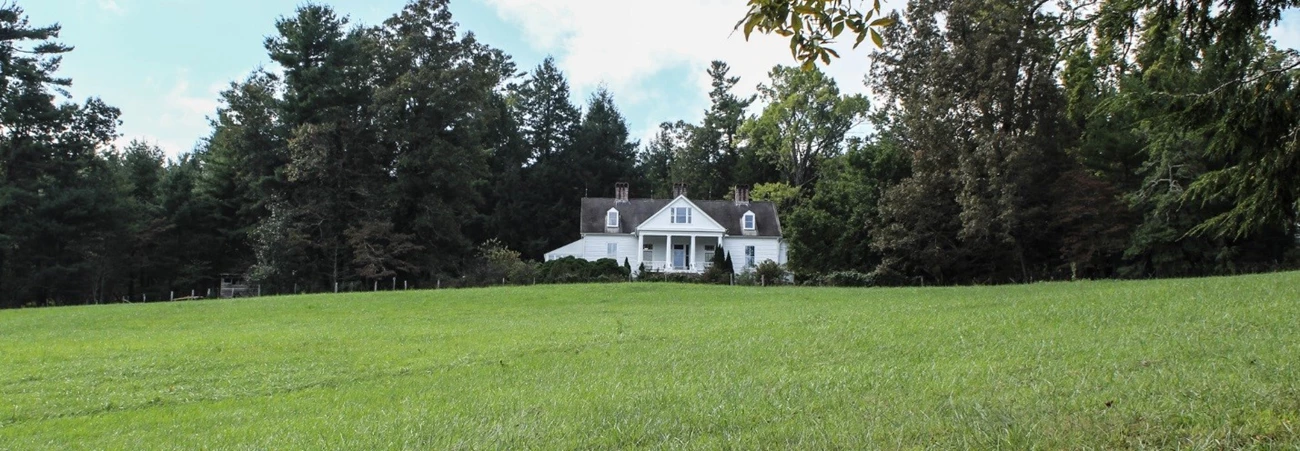Article
Literary Landscapes: Carl Sandburg Home National Historic Site
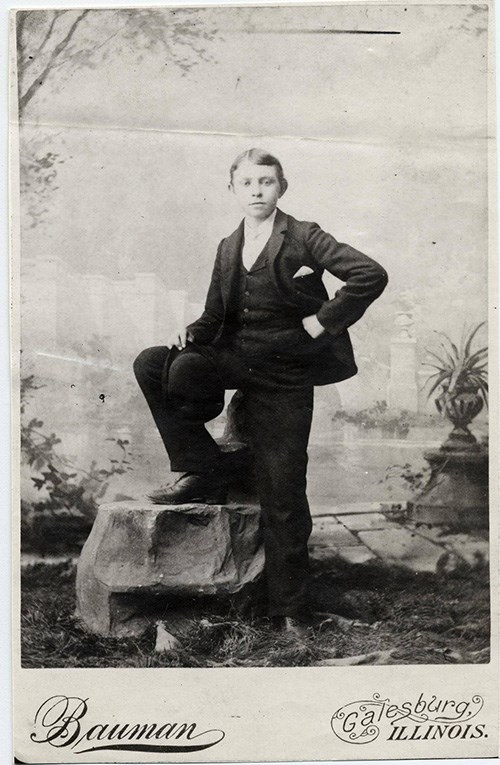
Photographer unknown. NPS / Carl Sandburg Home National Historic Site Archives.
The Literary Landscape of Carl Sandburg
“I was born on the prairie, and the milks of its wheat, the red of its clover, the eyes of its women, gave me song and a slogan.” (Carl Sandburg, “Prairie,” July 1918)
Located in Flat Rock, North Carolina, Carl Sandburg Home National Historic Site is the first national park unit honoring the life and works of an American poet. Considered among the most celebrated writers, poets, lecturers, and musicians of the 20th century, Sandburg received the Pulitzer Prize in two separate fields: one in history for Abraham Lincoln: The War Years, published in 1939, and later for his book Complete Poems, published in 1950.
Born on January 6, 1878, in Galesburg, Illinois, Sandburg was the firstborn son of hardworking Swedish immigrants. He left school at age 13 and worked a variety of jobs, served in Puerto Rico during the Spanish-American War, and thereafter enrolled in Lombard College where he was encouraged to pursue writing.
He landed a position as a journalist, working as a reporter for the Chicago Day Book from 1912-1917 and also for the Chicago Daily News. Sandburg reported on circumstances in industrial Chicago such as a lack of child labor laws, unsafe working conditions, and racial strife, including the Chicago race riots of 1919. Sandburg posited that economic inequality was the root of social conflict and focused his writings on the inequities of industrial society, including issues of poverty, immigration, and civil rights. His writings advocated for educational opportunities, job training, and equal access to housing, emphasizing both the hardships and perseverance of people.
While working as an investigative reporter, Sandburg developed his unique voice and found venues to publish his poems, such as Poetry Magazine. He often wrote in free verse and crafted written portraits of individuals and daily life in the industrial center of the United States, Chicago, which he called the “City of the Big Shoulders” in his award-winning poem bearing the city’s name. Rooted in place, Sandburg’s writings are about the American landscape – both urban and rural – and its effect on its people.
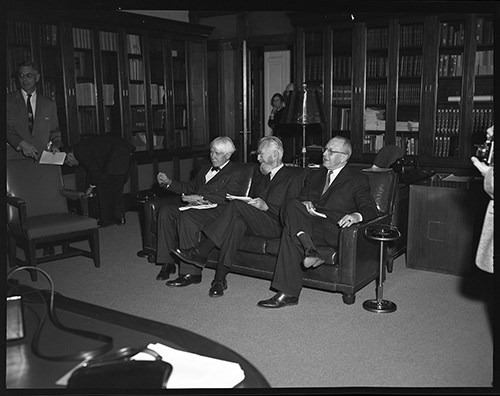
Library of Congress
Beginning in 1923 and published two years later, Sandburg’s Abraham Lincoln: The Prairie Years, was a two volume work that detailed Lincoln’s life before becoming President of the United States.
For the next thirteen years, Sandburg researched the 16th president extensively, culminating in the four volume biography Abraham Lincoln: The War Years. Published in 1939, it won the Pulitzer Prize in history in 1940.
Did You Know?
Sandburg lectured extensively on Lincoln and on February 12, 1959, on the 150th anniversary of Lincoln’s birth, he became the first private citizen to deliver an address before a joint session of Congress.
The Cultural Landscape of Connemara
Eventually the desires to escape harsh northern winters and to find a more suitable environment for Mrs. Lilian “Paula” Sandburg’s growing goat herd motivated the Sandburg family to relocate from Michigan to the mountains of southwestern North Carolina in 1945. Landing at the home site known as Connemara, named after a region in western Ireland by its earlier occupant in 1900, the rural character of the farm and natural surroundings of the grounds provided an environment for the family to focus on their work and passions.
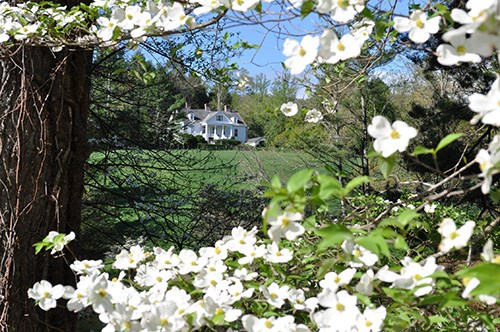
NPS / Carl Sandburg National Historic Site
Sandburg resided at Connemara for 22 years until his death in 1967. The landscape boasted extensive woodlands, pastures, ponds, orchards, trails, a winding entry drive, fences, vegetable and flower gardens, an endless variety of flowers and shrubbery, and views around the southern Appalachian Mountains. The main house had been constructed in 1838 by Christopher Memminger, Secretary of the Treasury for the Confederacy, and dozens of outbuildings were added over time to support the needs of the working landscape. At Connemara, Sandburg published several books of poetry, his autobiography, his one-volume Abraham Lincoln, and his only novel, Remembrance Rock. While Sandburg wrote prolifically during the 1950s, he hiked in the surrounding woods, walked through the meadows, and climbed nearby Big Glassy Mountain.
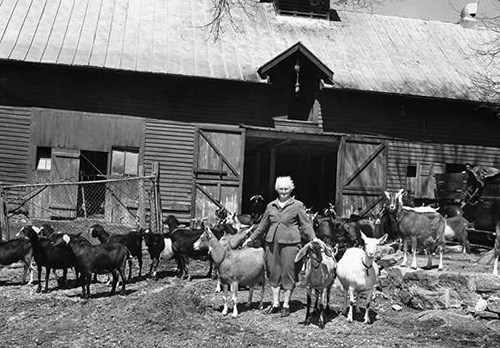
June Glenn, Jr. (NPS / Carl Sandburg Home National Historic Site, CARL 12732)
The Sandburgs arrived in North Carolina with 150 goats, and the herd doubled by the early 1950s. For over 30 years, Paula Sandburg owned and operated a premier goat dairy. The barn complex was a center of activity at Connemara during the Sandburg era and changes to the landscape resulted from the practical needs associated with tending the herds, including reorganizing the pastures and fences and reconfiguring outbuildings.
Nature was an integral part of Carl Sandburg’s life and writings. This appreciation of natural change was expressed in the maintenance of the Connemara landscape throughout the historic period. Ongoing transformations and processes in the environment, both natural and constructed, were celebrated. The changing patterns of additions and removals on the landscape were largely informal and flexible, with portions of the land managed and other portions left unmanaged, based on needs, interests, and availability of labor and time. The land was appreciated for its wildness.
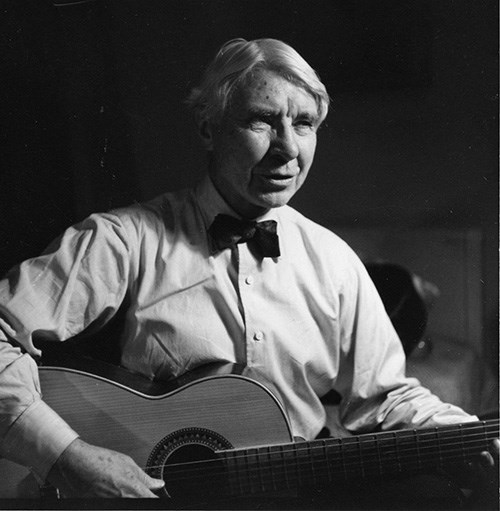
Photographer unknown. NPS / Carl Sandburg Home National Historic Site Collection
Sandburg's Legacy
Connemara was designated a National Historic Landmark and became a park unit a year after the poet’s death. Local legislators, with the assistance of Paula Sandburg, worked for the authorization of Carl Sandburg Home National Historic Site, which opened to the public in 1974. Today the park encompasses approximately 250 acres and the landscape is restored to the later historic period of approximately 1960-1967. The rural setting is well preserved with a high degree of integrity of location for its structures, roads, gardens, woodlands, and pastures.
Visitors to the park can tour the Sandburg home, hike the surrounding trails, and visit the farm and dairy goats. The park has an ongoing commitment to the arts with the Sandburg Writer–in-Residence program, in addition to several regular events that celebrate the arts including an annual poetry contest, summer theater performances, sing-a-longs, and poetry readings, among other events.
Exploring the breadth of what the American experience looks like, Sandburg celebrated each person as an individual with a unique story to tell. Carl Sandburg Home National Historic Site offers an opportunity to learn about Sandburg’s story and body of work. Sandburg produced writings about the urban environment in his native Midwest, and numerous writings were inspired in his bucolic home in western North Carolina. His themes concerning daily life within the American landscape still resonate today and established Sandburg’s enduring legacy as “Poet of the People.”
Carl Sandburg Home National Historic Site Cultural Landscape Report Amendment. Southeast Regional Office, National Park Service, Department of the Interior, 2006.
Carl Sandburg Home National Historic Site. National Park Service, Department of the Interior. Accessed June 27, 2019. <https://nps.gov/carl>
Carl Sandburg Biography and Timeline. Public Broadcasting Service, American Masters: Carl Sandburg. Accessed July 1, 2019.
<http://www.pbs.org/wnet/americanmasters/carl-sandburg-education-carl-sandburg-timeline/2320/>
Connemara, Carl Sandburg Home, National Historic Landmark Form, 1968. Accessed June 27, 2019. <https://catalog.archives.gov/id/47718800>
Hart, Susan. Carl Sandburg Home National Historic Site Cultural Landscape Report. Southeast Regional Office, National Park Service, Department of the Interior, 1993. <https://irma.nps.gov/DataStore/Reference/Profile/2188251>
Historic American Buildings Survey documentation of the Carl Sandburg National Historic Site. Accessed July 3, 2019. <https://www.loc.gov/pictures/search/?q=Carl+Sandburg&sp=1&co=hh>
The Poetry Foundation: Carl Sandburg. Accessed July 1, 2019. <https://www.poetryfoundation.org/poets/carl-sandburg>
Virtual Museum Exhibit at Carl Sandburg Home National Historic Site, Museum Management Program, National Park Service, US Department of the Interior. Accessed July 1, 2019. <https://www.nps.gov/museum/exhibits/carl/storyIntro.html>
Plan Your Visit
Calendar of EventsLast updated: December 4, 2023

